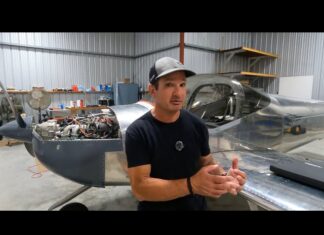I have some questions and feedback for several articles that appeared in the March 2024 Aviation Consumer.
First, the DeltaHawk engine update. One big challenge when considering an engine replacement is the weight and balance impact. In your article, you mention the DeltaHawk engine being just shy of 350 pounds, which is of course the manufacturer’s published figure. However, you don’t mention exactly what is or is not included in that weight.
As an example, my Cessna Skyhawk XP (R172K) has a Continental IO-360-KB engine and the Continental type certificate data sheet gives a dry weight of 327.25 pounds without accessories. Can that be compared 1:1 to the DeltaHawk’s quoted weight? What accessories are meant? Starter and starter adapter? Alternator? Magnetos? Propeller governor? Oil cooler? These weights can be obtained, but it isn’t obvious which accessories are common to both engines and which might be different between the two.
Next is the Aithre Turbo oxygen generator, which is a very interesting product. I am sure there are technical reasons for the altitude limitation, but 15,000 feet is a rather awkward altitude limit. Anyone flying regularly over the Rockies IFR (or as in my case, the Swiss Alps) needs 16,000 to 18,000 feet minimum, which unfortunately rules out the product as an O2 bottle alternative. I think this deserves a mention in an article and maybe a question for Aithre.
Last, in the top-pick STOL article in the Cessna section, you say that a 172XP with a tuned exhaust, electronic ignition and STOL kit/VGs could make the cut. I’m aware of the electronic ignition and STOL kit/VG options. I have Electroair, Stene STOL, and Micro Aerodynamics VGs all installed on my XP, but I have never seen any tuned exhaust for this engine. Can you be specific what you have in mind here? The 172XP has a Continental engine and Power Flow only provides exhausts for Lycoming engines AFAIK.
Keep up your good work.
—Vince Fischer, via email
We asked DeltaHawk for a clarification on the weight of its DHK-series engines and was told the 347-pound published weight includes the starter (no adapter is required), alternator, engine-to-turbo exhaust and of course the turbo. Obviously being a diesel, it does not have magnetos or any other spark ignition system. It does have glow plugs, which are included in the base weight. The propeller governor is not included in that weight, and that will depend upon the governor, which is chosen by others. What is not included in the 347-pound specification are the external heat exchangers, such as the oil cooler, radiator and intercooler. Likewise, with the gas engines, what is not included is baffling and other parts.
The company also said that the engine must fit into the weight and balance envelope of the aircraft, but assuming the DHK engine does, when making a comparison, don’t forget you are comparing a non-turbocharged gas engine to this turbocharged one. A turbocharged Lycoming IO-360 is right near the DeltaHawk’s base weight.
As for Aithre’s oxygen generator, the company said the flow rates versus concentration is tightly related. The Aithre Turbo outputs 1 LPM at >93 percent concentration. Increasing the flow rate results in a decrease in concentration, per the published graph taken from the product instructions.
Based on its internal testing, it found it possible to support SpO2 values above 92 percent at 1 LPM and 18,000 feet. With two individuals splitting the flow rate to 0.5 LPM each, Aithre found it possible to support SpO2 above 92 percent at 0.5 LPM and at 15,000 feet. Aithre said it is actively gathering more data and will make adjustments as that data becomes available.
Last, you’re correct—a tuned exhaust does not exist for a Cessna 172XP. We misspoke.
Wingman Med feedback
I read the Wingman Med article in the April 2024 Aviation Consumer and can offer my experience. After several medical issues which I believed were not serious after my consultation with my primary care physician, I sent in my MedX form and visited my AME. The nightmare began with request after request from the FAA medical certification center and after months of agony I heard of Wingman Med. Dr. Keith Roxo was great to work with—responsive and effective.
After 18 months, 26 doctor visits and the frustrating experience with the FAA, and with both my aviation attorney and Wingman Med navigating the bureaucracy of the FAA, I received my Third Class medical back with an expiration date that was only eight months away! BasicMed, here I come.
—Name withheld by request





